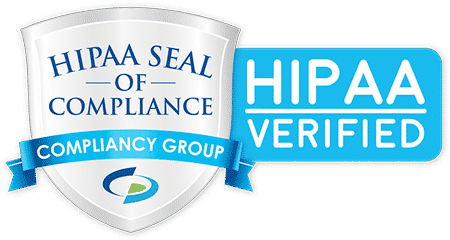Environmental Causes & Risk Factors Of Autism
Exploring the Environmental Influences on Autism Spectrum Disorder

Understanding Autism Beyond Genetics
Autism Spectrum Disorder (ASD) is a complex neurodevelopmental condition marked by social communication challenges, language difficulties, and repetitive behaviors. While genetic components play a dominant role in ASD, emerging research highlights a significant contribution from environmental causes and risk factors throughout prenatal, natal, and postnatal development. This article delves into the environmental influences linked to autism, how these factors interact with genetic predispositions, and their implications for prevention and intervention strategies.
The Role of Environmental Factors in Autism Risk
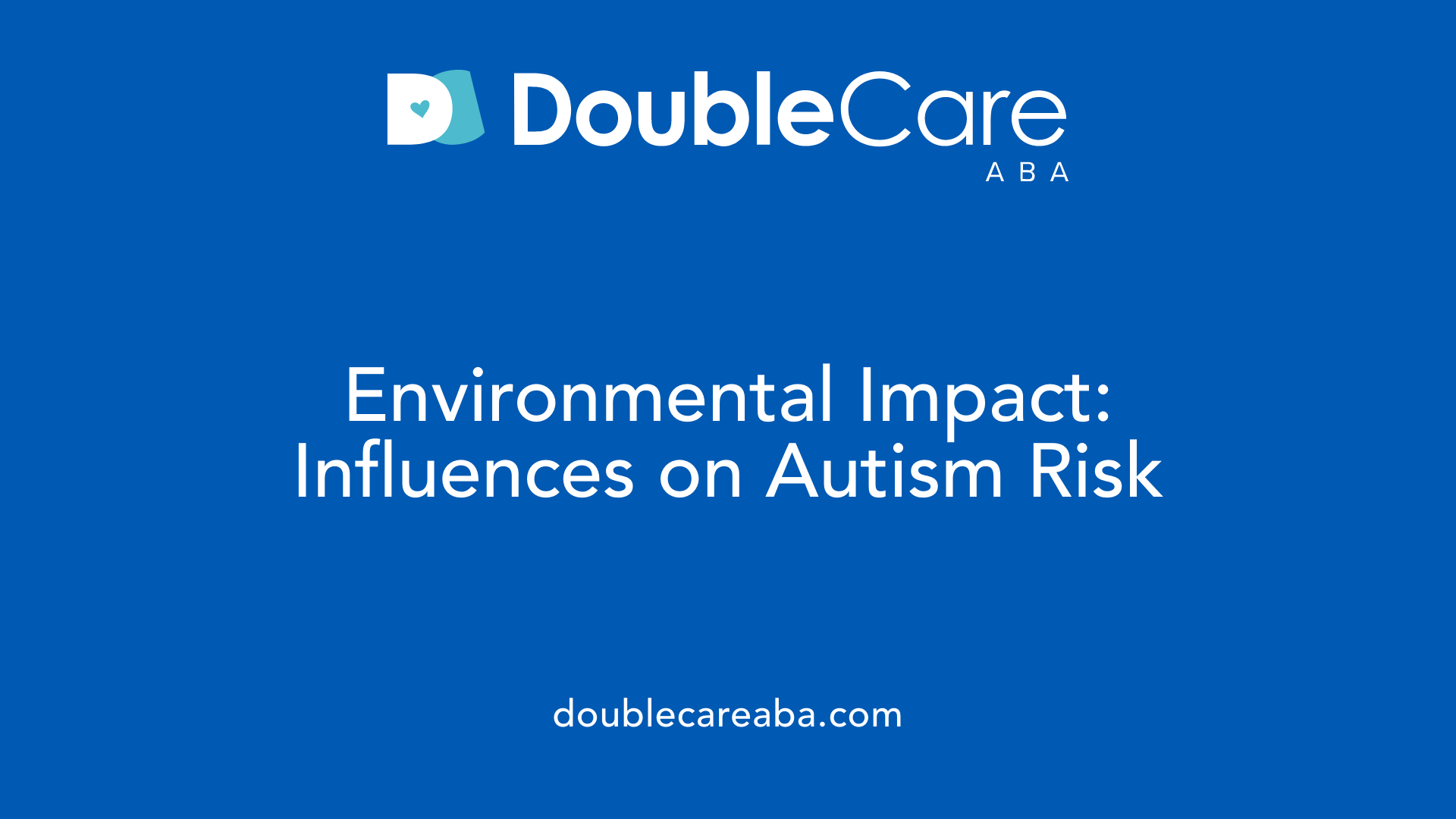
Overview of environmental influences on ASD
Environmental factors play a substantial role in autism spectrum disorder (ASD), alongside genetic predispositions. These factors span prenatal, natal, and postnatal periods and include parental age, maternal health, exposure to pollutants, nutritional status, and birth complications. For example, advanced paternal age—particularly over 34 years—is linked to increased autism risk due to mutations and epigenetic changes in sperm DNA. Maternal conditions during pregnancy like diabetes, hypertension, infections, and mental health issues such as stress and anxiety can also elevate risk by influencing fetal brain development via epigenetic mechanisms.
Exposure to certain medications during pregnancy (e.g., valproic acid), environmental pollutants such as pesticides and heavy metals, and factors like low socioeconomic status further contribute to the complexity of autism risk factors. Postnatal elements such as low birth weight and neonatal infections have also been associated with higher ASD susceptibility. Protective factors include maternal intake of omega-3 fatty acids, folic acid supplementation, and an adequate diet rich in essential vitamins and iron.
Percentage of autism risk attributed to environment
Research indicates that environmental factors may account for approximately 40–50% of the variance in ASD liability. This significant contribution underscores the importance of considering environmental exposures alongside genetic factors when investigating autism origins. The multifactorial nature of ASD involves immune responses, oxidative stress, endocrine disruptions, and alterations in neurotransmitter signaling potentially triggered or modulated by environmental influences.
Interaction of genetics and environment
Most autism results from a complex interplay between inherited genetic susceptibility and environmental exposures occurring primarily during early brain development. Genetic factors involved in neuronal development and synaptic function interact with environmental insults such as maternal infection or pollutant exposure to affect neurodevelopment through mechanisms like inflammation and neuroinflammation.
This gene-environment interaction helps explain why even genetically predisposed individuals may not develop ASD without specific environmental triggers. It also highlights the heterogeneity observed in ASD presentations and the challenges in isolating singular causative factors. Understanding these interactions is critical for developing more effective prevention and intervention strategies.
How significant are environmental factors in the development of autism?
Environmental factors are believed to contribute to 40–50% of the liability in autism spectrum disorder, highlighting their considerable influence alongside genetic components. Most autism cases are thought to result from complex interactions between genetic vulnerabilities and environmental exposures affecting early brain development.
Prenatal Risk Factors: Parental Age and Genetic Mutations
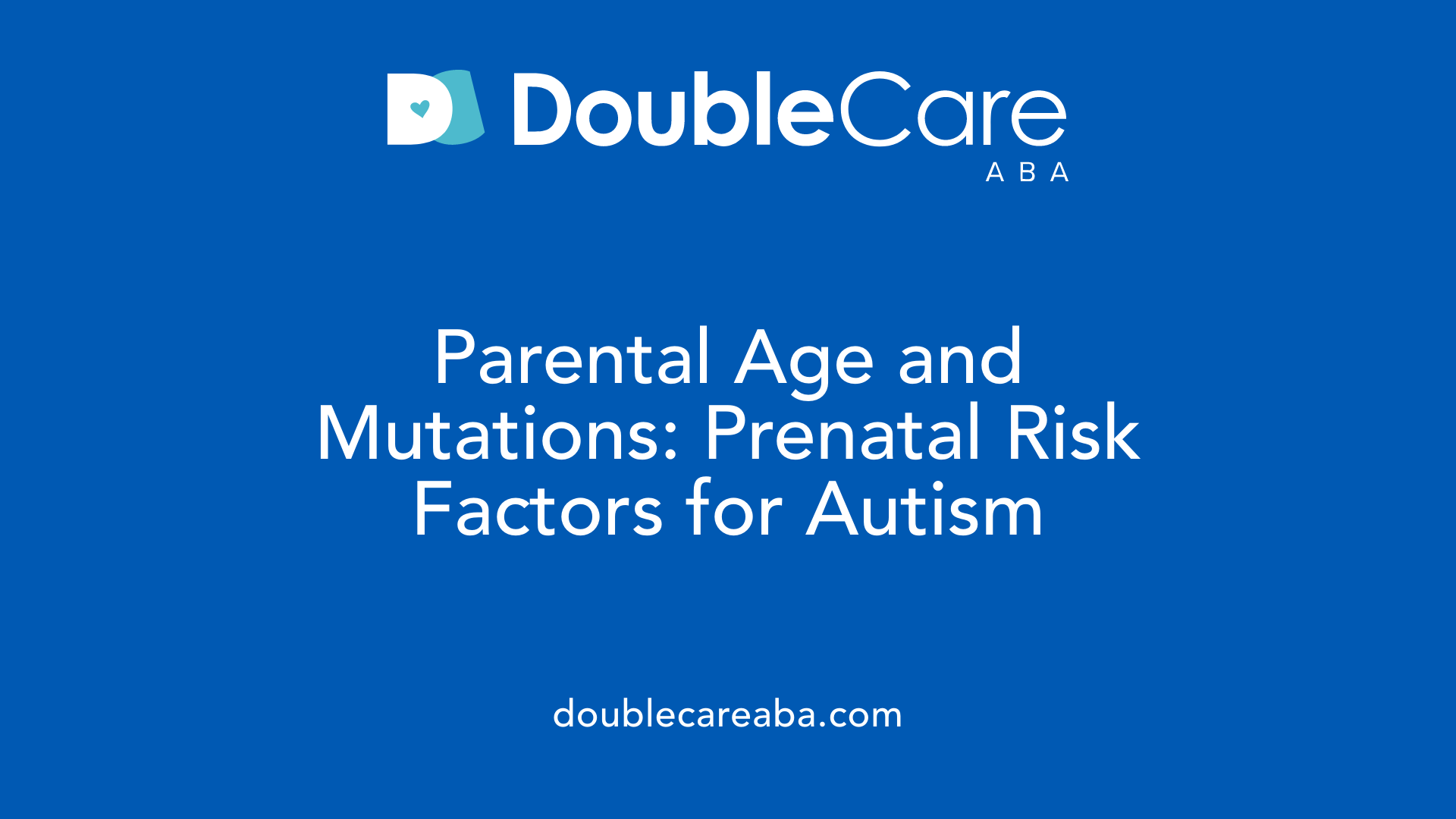
How does advanced parental age influence autism risk?
Advanced paternal age, particularly over 34 years, is linked to an increased risk of autism in offspring. This association is thought to arise from accumulated mutations and epigenetic alterations in sperm DNA as men age. These changes can affect gene function and regulation, potentially impacting fetal brain development.
Similarly, advanced maternal age also contributes to autism risk. Studies indicate that with every 10-year increase in either parent's age, the risk of autism spectrum disorder (ASD) increases by approximately 18-21%. This suggests that both maternal and paternal ages play significant roles in prenatal autism risk.
Mutations and epigenetic modifications resulting from parental aging influence neuronal development and synaptic function, critical factors for healthy brain connectivity. These genetic changes can disrupt signaling pathways and gene networks associated with autism, underscoring the complex interplay between inherited genetic vulnerabilities and environmental factors.
Overall, the elevated autism risk observed with older parents highlights the importance of understanding how genetic mutations and epigenetic mechanisms during gamete formation affect early neurodevelopment. Ongoing research continues to explore these biological processes to better elucidate how parental age impacts ASD susceptibility.
Maternal Health During Pregnancy and Autism Risk
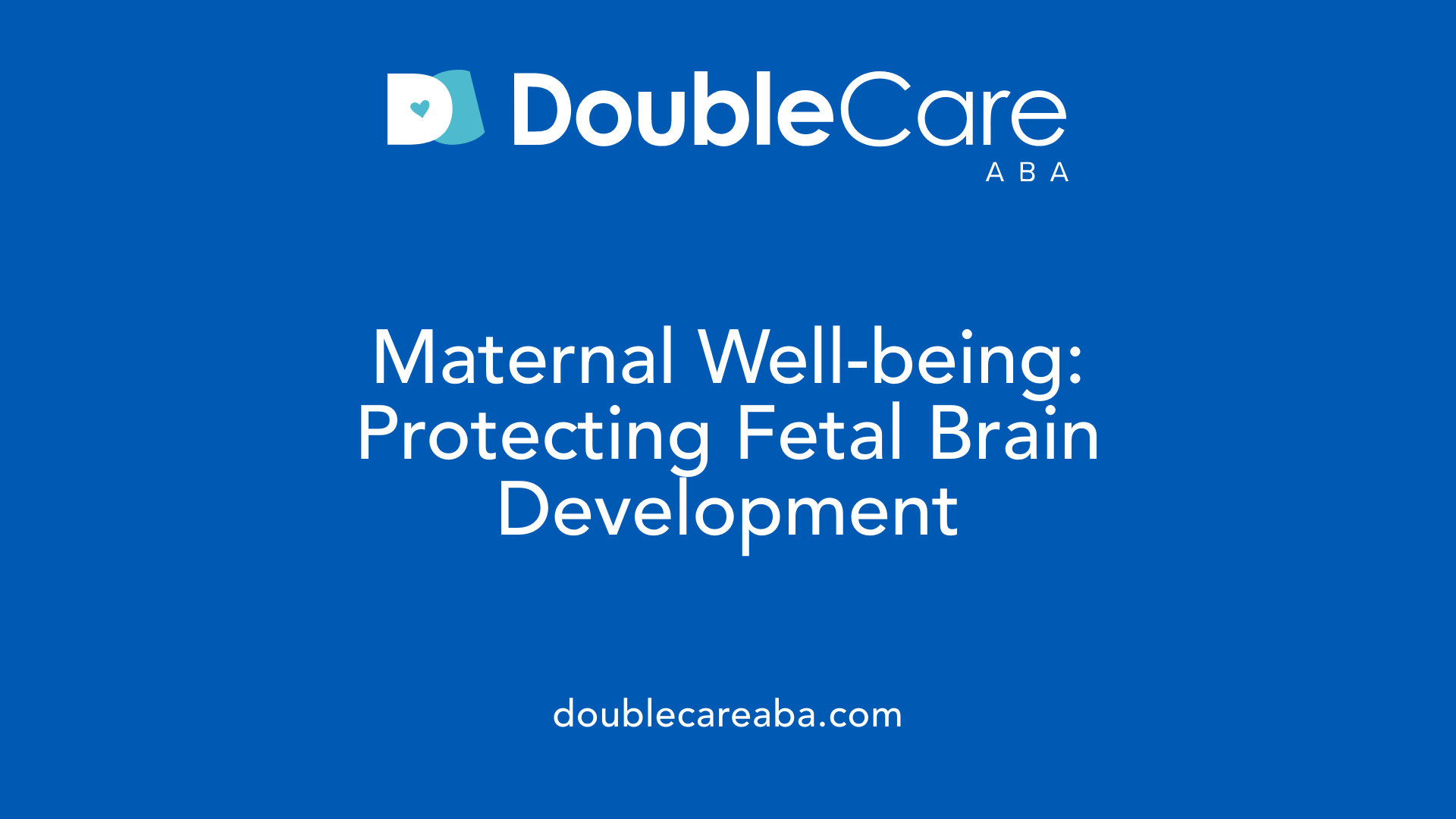
What maternal health issues during pregnancy are linked to autism?
Maternal health plays a crucial role in the early developmental environment of the fetus, influencing the risk of autism spectrum disorder (ASD). Several maternal conditions during pregnancy have been linked to a higher likelihood of autism in children.
Metabolic syndrome components — including diabetes, hypertension, and obesity — are particularly significant. These conditions can create an inflammatory environment and alter metabolic and vascular function, thereby impacting fetal brain development. For instance, maternal diabetes is known to affect glucose regulation and may contribute to oxidative stress in the fetal brain.
Additionally, maternal infections during pregnancy are associated with increased autism risk. The immune activation triggered by infections can induce inflammatory responses that affect neural development. Likewise, episodes of bleeding during pregnancy might signal disruptions in placental function or fetal oxygen supply, further elevating susceptibility to ASD.
These maternal health factors potentially contribute to autism risk through epigenetic mechanisms, where environmental influences change gene expression without altering DNA sequences. This may influence essential signaling pathways and brain development processes critical in ASD.
Proper management and monitoring of maternal health conditions, alongside prenatal care, can be important to mitigate these risks. Further research continues to explore the precise biological links between maternal health and ASD risk.
| Maternal Health Issue | Impact on ASD Risk | Mechanism of Influence |
|---|---|---|
| Metabolic Syndrome (Diabetes, Hypertension, Obesity) | Increases likelihood of autism | Inflammation, oxidative stress, metabolic disruption |
| Maternal Infections | Linked to higher autism incidence | Immune activation, neuroinflammation |
| Bleeding During Pregnancy | Associated with increased ASD risk | Placental dysfunction, fetal hypoxia |
Impact of Maternal Mental Health on Fetal Brain Development
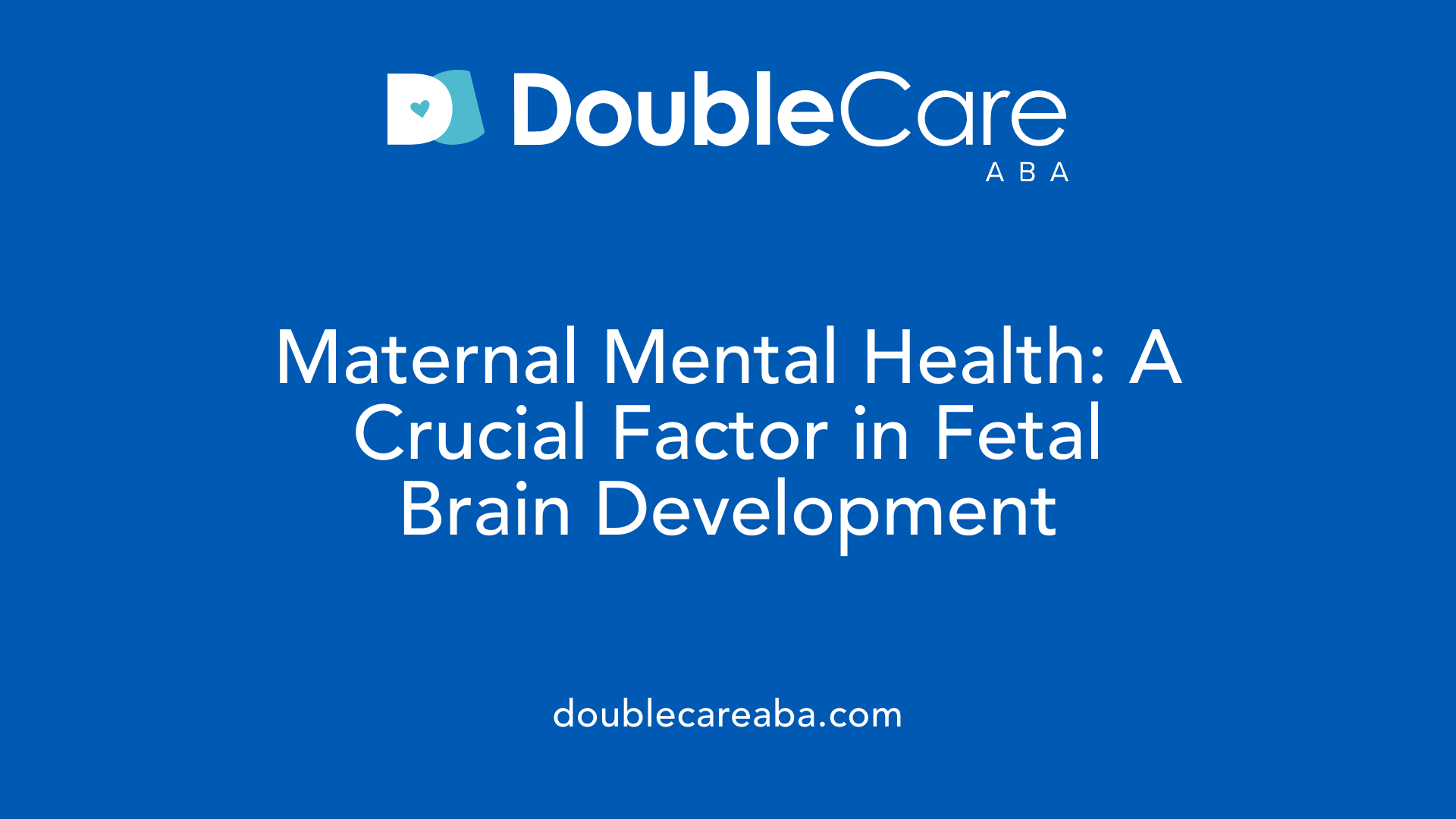
How do maternal mental health problems influence autism risk?
Maternal mental health issues during pregnancy, such as stress, depression, and anxiety, have been shown to significantly influence the risk of autism spectrum disorder (ASD) in children. These conditions can lead to changes in the intrauterine environment that affect the developing fetal brain in complex ways.
Stress, depression, and anxiety effects
When a pregnant woman experiences chronic stress or mood disorders, her body releases elevated levels of stress hormones like cortisol. These hormones can cross the placenta and disrupt normal fetal brain development. This disruption may alter neural circuitry involved in social communication and behavior, hallmark features of ASD.
Epigenetic changes due to maternal mental health
Importantly, maternal mental health problems can induce epigenetic modifications—heritable changes in gene expression without altering the DNA sequence. These epigenetic shifts can affect genes regulating neuronal growth, synaptic connectivity, and immune responses in the brain. By influencing such pathways, maternal psychological distress can increase fetal susceptibility to autism.
In summary, maternal stress, depression, and anxiety during pregnancy are critical environmental factors that modify fetal brain development through hormonal and epigenetic mechanisms, elevating the child's future risk of autism. Addressing maternal mental health proactively may therefore be an essential strategy for reducing ASD prevalence.
Prenatal Exposure to Medications and Chemicals

Which prenatal medications and substances are linked to increased autism risk?
Exposure to certain medications and chemicals during pregnancy has been linked to an elevated risk of autism spectrum disorder (ASD) in children. One of the most studied medications is valproic acid, an antiepileptic drug, which is known to impact fetal brain development negatively, thereby increasing ASD risk.
In addition to valproic acid, other substances such as paracetamol, some antidepressants, and thalidomide have also been associated with autism risk to varying degrees. These medications can alter fetal neurodevelopment, likely through epigenetic modifications and interference with critical signaling pathways.
Environmental chemicals pose another concern. Prenatal exposure to pesticides and heavy metals like inorganic mercury and lead has gained scientific attention. These toxins may induce oxidative stress, inflammation, and endocrine disruption in the developing brain, factors implicated in ASD pathology.
Research indicates that these chemical exposures do not act in isolation but often interact with genetic vulnerabilities, which may exacerbate neurodevelopmental risks.
Careful consideration of medication use during pregnancy, along with minimizing exposure to harmful environmental chemicals, is important in reducing potential ASD risks. However, more prospective and genetically informed studies are needed to clarify these complex relationships and to guide safe clinical and public health practices.
Socioeconomic and Environmental Pollutant Factors
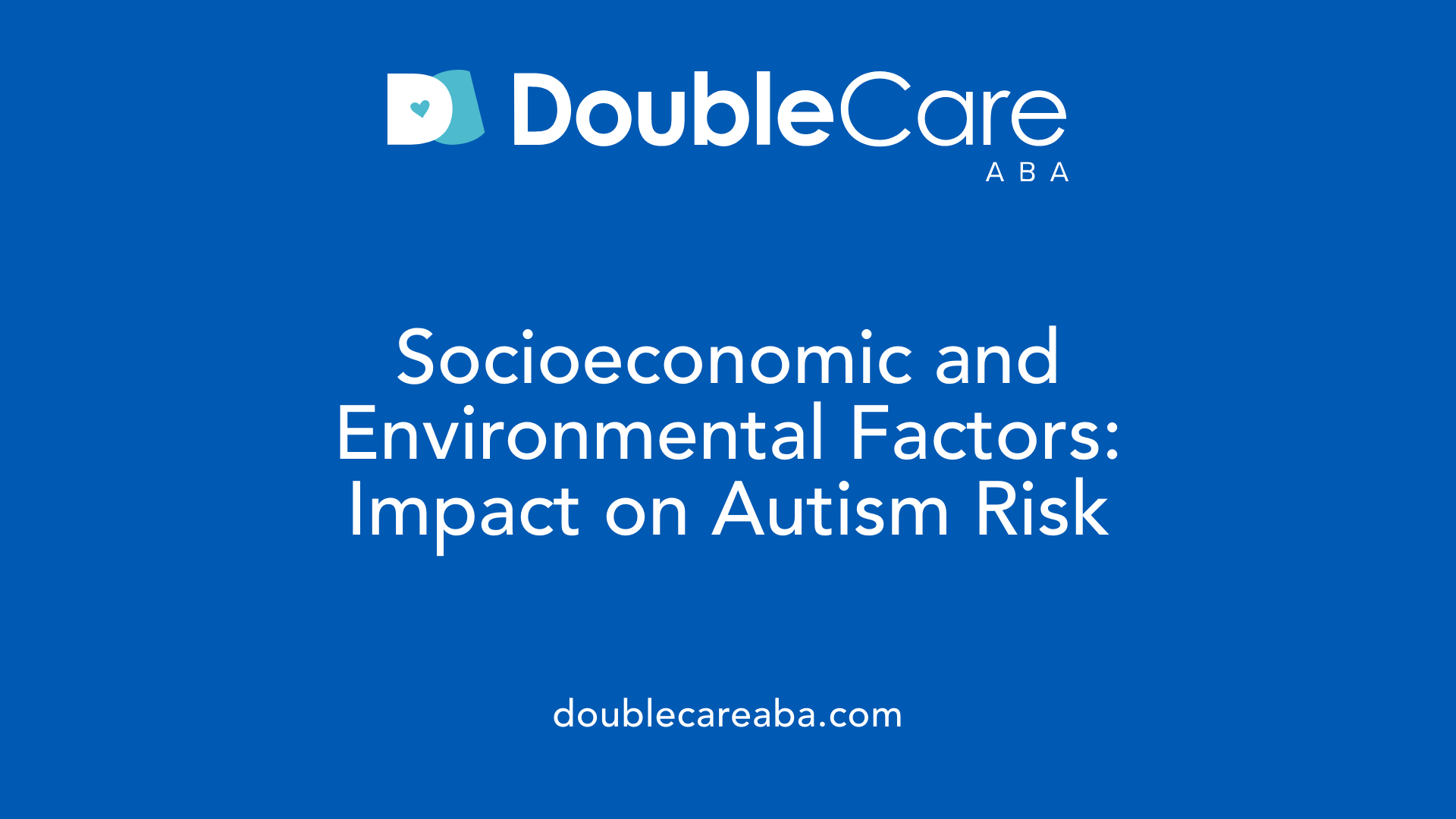
How do socioeconomic and environmental exposures affect autism risk?
Low socioeconomic status is often linked to a greater risk of autism spectrum disorder (ASD) due to several interconnected factors. Individuals in lower socio-economic groups typically face barriers such as poor access to quality healthcare, which can limit prenatal and early childhood interventions crucial for minimizing ASD risk. Moreover, these populations are more likely to live in environments with greater exposure to harmful pollutants.
Exposure to environmental pollutants, including pesticides, heavy metals like lead and inorganic mercury, and various industrial chemicals, can adversely affect fetal brain development. These toxins may cause oxidative stress, inflammation, and epigenetic alterations, disrupting essential neurodevelopmental processes and increasing susceptibility to ASD.
Poor healthcare access exacerbates these risks, as early detection and management of maternal health issues—such as metabolic disorders, infections, or mental health challenges—become more difficult. This delay or lack of care may potentiate the effects of environmental toxins and stressors during critical periods of brain development.
Efforts to reduce ASD risk must consider these socioeconomic and environmental dimensions. Enhancing healthcare accessibility and reducing environmental toxin exposure in vulnerable communities can help mitigate potential triggers linked to autism development.
Natal Complications Related to Autism Susceptibility
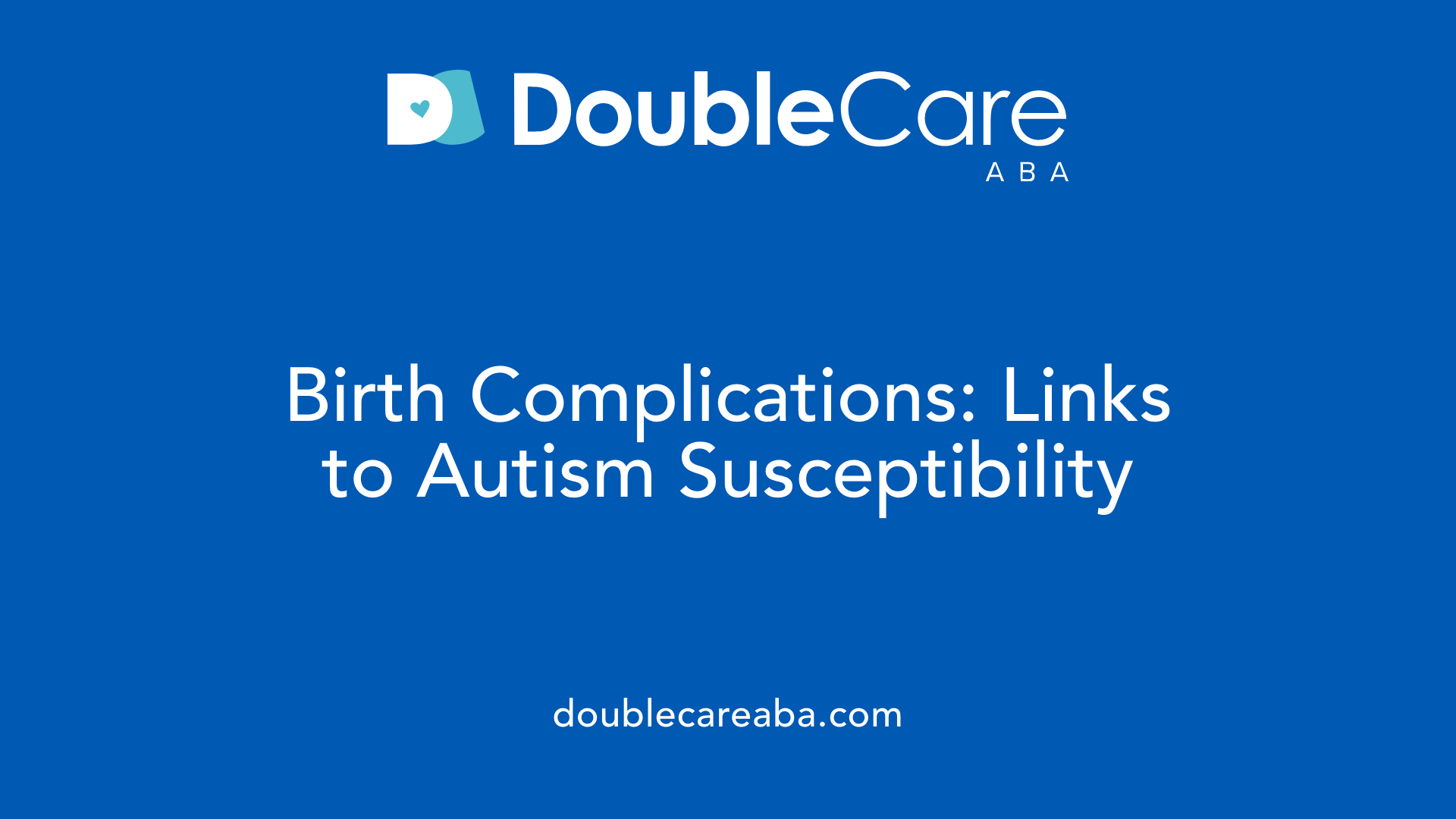
What birth complications have been linked to autism?
Several natal factors have been strongly linked to increased susceptibility to autism spectrum disorder (ASD). Abnormal gestational age is one notable complication, with both preterm (born before 37 weeks) and postterm (born after 42 weeks) births being associated with higher autism risk. Prematurity can disrupt critical periods of brain development, while postterm birth may increase risks related to placental insufficiency.
Fetal distress during labor, characterized by oxygen deprivation or ischemia, is another significant risk factor. This distress can impair neonatal brain function and increase ASD likelihood. Related to this, umbilical cord complications such as cord prolapse or compression can reduce oxygen supply to the fetus, further exacerbating neurodevelopmental risk.
Cesarean delivery has also been linked with a slight but consistent elevation in autism risk compared to vaginal births. Although the exact mechanisms are unclear, it is hypothesized that cesarean sections might affect neonatal microbiome development or reflect underlying pregnancy complications that predispose to ASD.
Collectively, these birth complications may contribute to autism risk by interfering with oxygen delivery and brain growth during critical windows of early development. Understanding these associations can help identify infants at higher risk and inform closer developmental monitoring.
| Natal Complication | Description | Potential Impact on Autism Risk |
|---|---|---|
| Preterm Birth (<37 wks) | Early delivery disrupting brain maturation | Increased ASD susceptibility due to immature brain |
| Postterm Birth (>42 wks) | Extended gestation potentially causing placental issues | Elevated risk potentially from compromised fetal health |
| Fetal Distress | Oxygen deprivation during delivery | May cause neuronal injury increasing autism risk |
| Umbilical Cord Issues | Compression or prolapse affecting oxygen supply | Linked with hypoxia contributing to neurodevelopmental problems |
| Cesarean Delivery | Surgical birth potentially affecting microbiome or reflecting complications | Small but significant increased ASD risk |
Postnatal Risk Factors and ASD
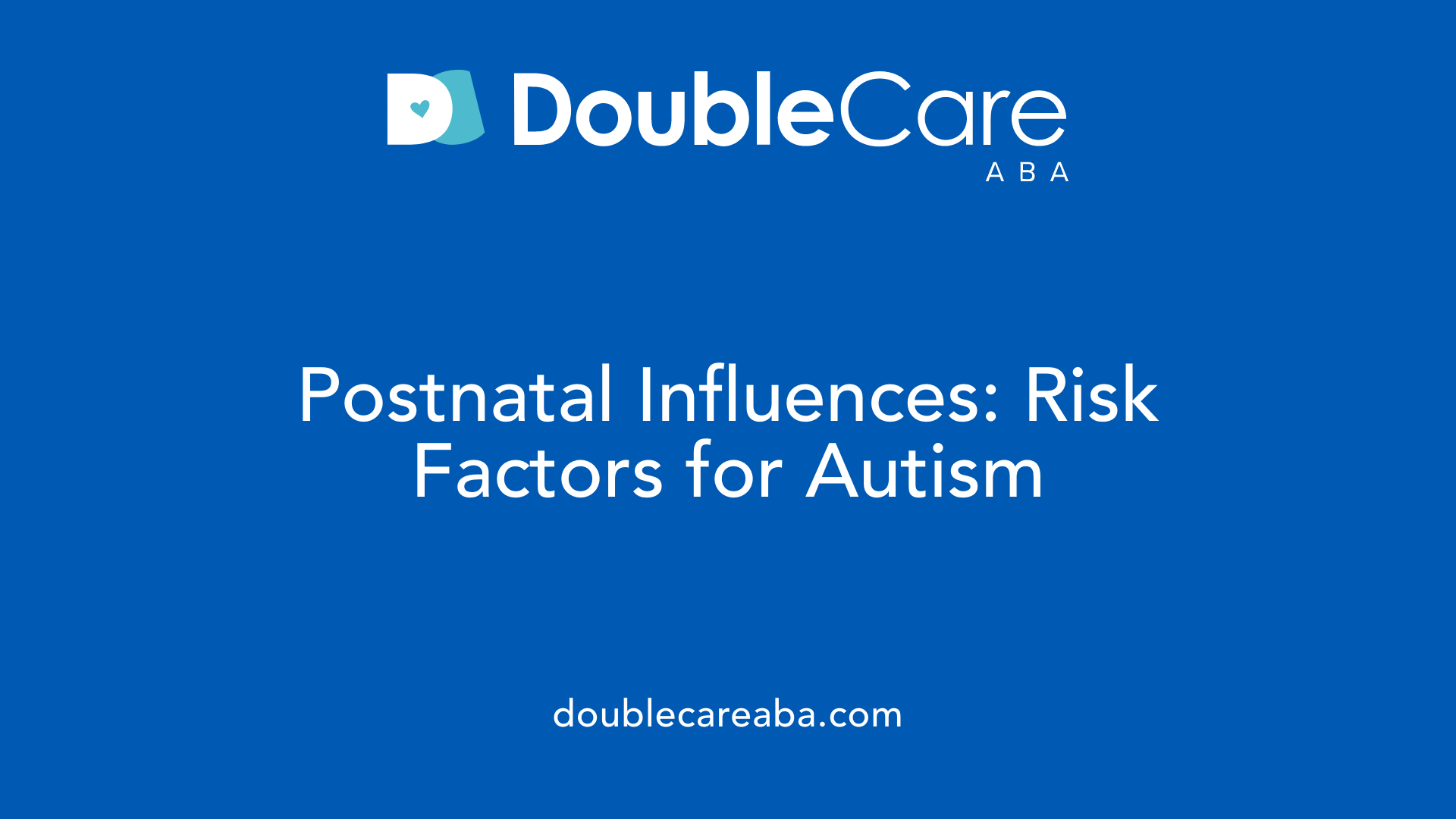
Which postnatal factors contribute to autism risk?
Several postnatal conditions have been linked to an increased risk of Autism Spectrum Disorder (ASD). Notably, low birth weight, neonatal jaundice, and infections in the early postnatal period appear to contribute to the likelihood of developing ASD later in life.
Low birth weight, often a result of premature birth or intrauterine growth restriction, places infants under physiological stress that can affect brain development. Studies show a correlation between infants born with low birth weight and higher prevalence of ASD, possibly due to impaired neurological maturation.
Neonatal jaundice, characterized by elevated bilirubin levels shortly after birth, has also been associated with increased ASD risk. Elevated bilirubin may cause neurotoxicity if untreated, influencing critical developmental pathways during early life.
Infections in the neonatal period may trigger immune responses and inflammation, potentially disrupting normal brain development processes. These early-life infections can act as environmental stressors that increase vulnerability to ASD.
Collectively, these postnatal factors highlight the sensitivity of the newborn brain to physiological challenges. Understanding the impact of such conditions could help in early identification and intervention strategies for children at risk of ASD.
| Postnatal Factor | Description | Potential Impact on ASD Risk |
|---|---|---|
| Low Birth Weight | Birth weight below normal range for gestational age | Impaired neurological development due to physiological stress |
| Neonatal Jaundice | High bilirubin levels causing yellowing of the skin | Possible neurotoxicity affecting brain maturation |
| Postnatal Infections | Early infections leading to immune activation | Inflammation and altered neurodevelopment affecting brain function |
These findings suggest that attentive perinatal care and monitoring for these conditions could be important in mitigating ASD risk during the critical early stages of life.
Protective Nutritional Factors During Pregnancy
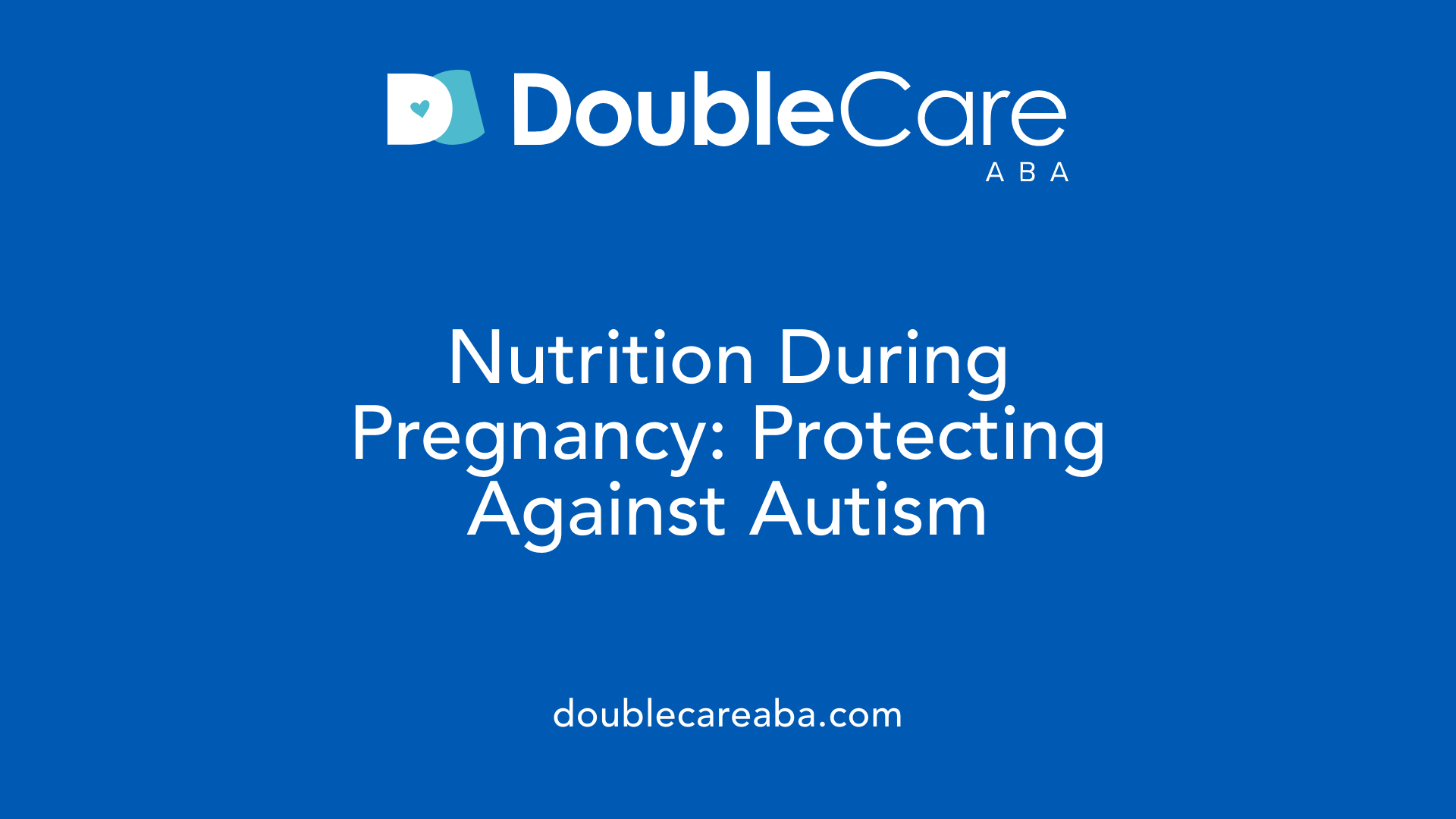
What nutritional factors during pregnancy might reduce autism risk?
Maternal nutrition plays a pivotal role in fetal brain development and can influence the risk of autism spectrum disorder (ASD). Several nutritional factors have emerged as protective against autism when consumed appropriately during pregnancy.
Folic Acid Supplementation Folic acid, a B-vitamin essential for DNA synthesis and repair, is widely recognized for its protective effects when taken before conception and during early pregnancy. Supplementation helps reduce neural tube defects and is linked to a lower risk of ASD. It supports optimal brain development by aiding in proper cellular growth and epigenetic regulation.
Omega-3 Fatty Acids Omega-3 fatty acids, especially DHA (docosahexaenoic acid), are crucial components of neuronal membranes and influence synaptic function. Maternal intake of omega-3s during pregnancy is associated with improved neurodevelopmental outcomes and may reduce inflammation and oxidative stress, factors involved in ASD pathogenesis.
Diet Rich in Vitamins and Iron A well-balanced diet rich in essential vitamins (including vitamin D, although its role remains under investigation) and minerals like iron contributes to overall fetal health. Adequate iron supports oxygen transport and brain myelination, which are critical in early neural establishment.
Maintaining these protective nutritional factors may help create an environment conducive to healthy brain maturation, potentially lowering autism risk. However, research continues to explore the extent and mechanisms of these benefits.
| Nutrient | Role in Pregnancy | Potential Protective Mechanism Against ASD |
|---|---|---|
| Folic Acid | DNA synthesis, epigenetic regulation | Reduces neural defects, supports neurodevelopment |
| Omega-3 Fatty Acids | Neuronal membrane component, anti-inflammatory | Reduces oxidative stress, aids synaptic function |
| Vitamins & Iron | Various roles in metabolism, oxygen transport | Supports overall fetal health, brain myelination |
Avoidance of Harmful Prenatal Exposures

What prenatal exposures should be avoided to reduce autism risk?
Reducing autism risk begins with minimizing harmful prenatal exposures that can impact fetal brain development. Important factors to avoid include maternal smoking and alcohol use during pregnancy. Although evidence is inconsistent about smoking, it is generally recommended to avoid smoking and alcohol to prevent potential harmful developmental effects.
Excessive maternal weight gain during pregnancy is also linked to increased autism risk. Maintaining a healthy weight through proper diet and regular prenatal care can help mitigate this risk.
Prolonged exposure to high temperatures during pregnancy is another factor that should be minimized, as elevated maternal body temperature might interfere with fetal neural development.
Lastly, infections during pregnancy pose significant risks. Maternal infections can trigger immune responses and inflammation that may affect the developing brain, increasing autism susceptibility. Prompt diagnosis and management of infections, along with appropriate vaccinations prior to pregnancy, are critical preventive measures.
By avoiding these harmful prenatal exposures, mothers can support healthier fetal development and potentially reduce the chance of autism spectrum disorder.
| Prenatal Exposure | Reason for Avoidance | Preventive Measure |
|---|---|---|
| Maternal smoking | Possible fetal developmental harm | Complete cessation during pregnancy |
| Alcohol use | Neurotoxic effects on fetal brain development | Avoidance of alcohol in pregnancy |
| Excessive weight gain | Associated with higher autism risk | Nutritional management and prenatal care |
| Prolonged high temperature | May disrupt neural development | Avoidance of heat stress and overheating |
| Infections during pregnancy | Can induce inflammation and neurodevelopmental disruption | Prompt treatment and preventive health care |
Avoiding these factors plays a vital role in promoting optimal neurodevelopment and reducing autism risk in offspring.
Mechanisms Linking Environmental Factors and ASD
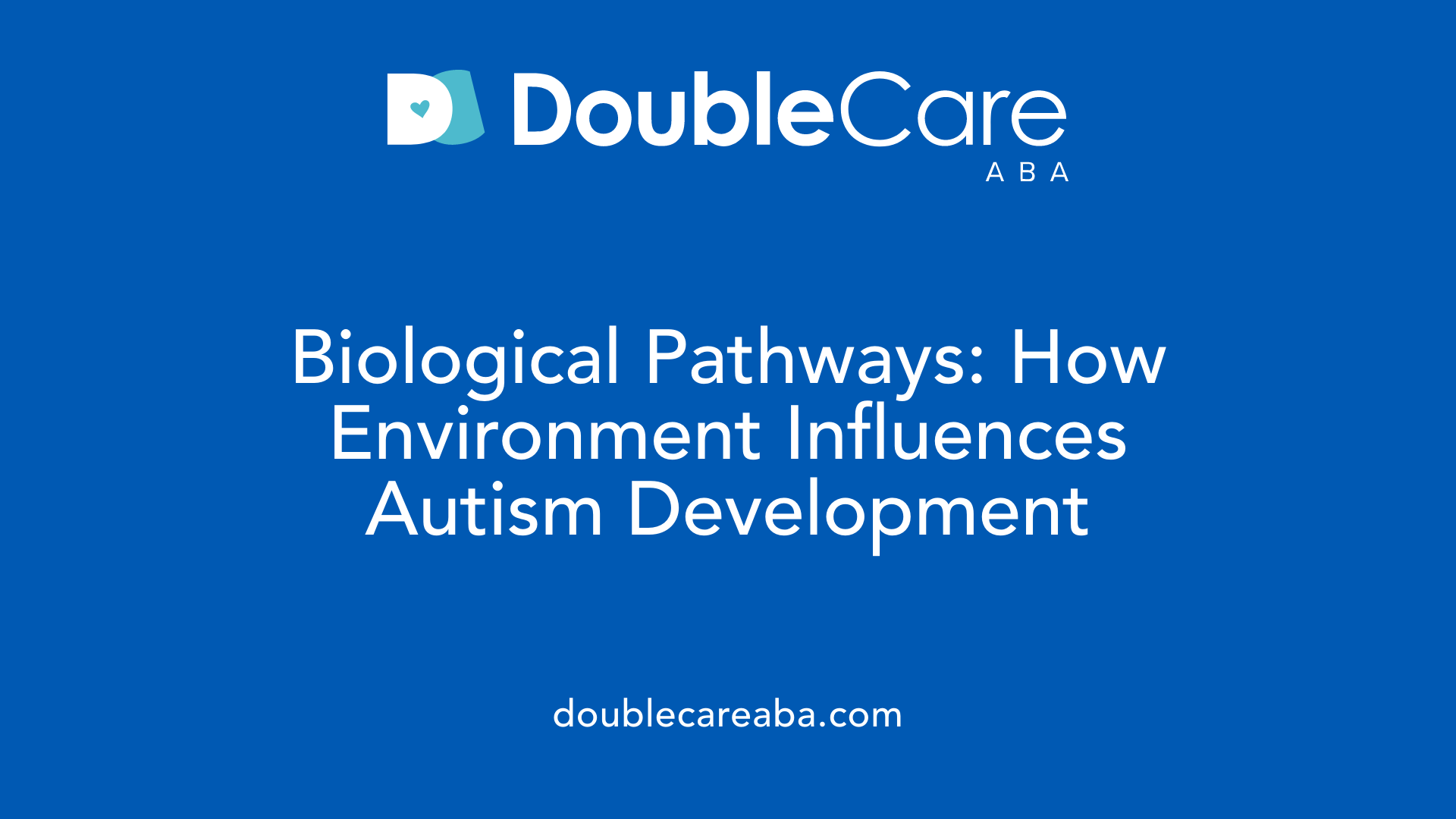
What biological mechanisms connect environmental exposures to autism risk?
Environmental risk factors may promote ASD through a range of biological mechanisms that affect brain development and function. One primary pathway is inflammation and oxidative stress. Exposure to infections, pollutants, or toxic chemicals during critical developmental periods can activate the immune system and increase oxidative damage in neural tissues, disrupting normal neuronal growth.
Another important mechanism is hypoxia and ischemia, which refer to oxygen deprivation and restricted blood flow, respectively. Birth complications such as fetal distress or trauma can cause these conditions, impairing brain regions responsible for social and cognitive functions.
Endocrine disruption is also implicated, where chemical exposures interfere with hormone regulation. Endocrine-disrupting compounds (EDCs) can alter fetal brain development by modulating hormonal signals critical for neuronal differentiation and connectivity.
Alterations in neurotransmitter systems further link environmental risks to ASD. Changes in the balance of neurotransmitters like serotonin, dopamine, and glutamate can impact synaptic communication and neural circuit formation.
Finally, environmental insults may cause interference with neural signaling pathways critical for brain growth. These pathways, including those governed by growth factors and intracellular messengers, are essential for guiding neural migration, synapse formation, and plasticity.
Together, these interconnected biological processes help explain how diverse environmental exposures can increase susceptibility to ASD by disrupting early brain development and neuronal communication.
Gene-Environment Interactions in Autism Development
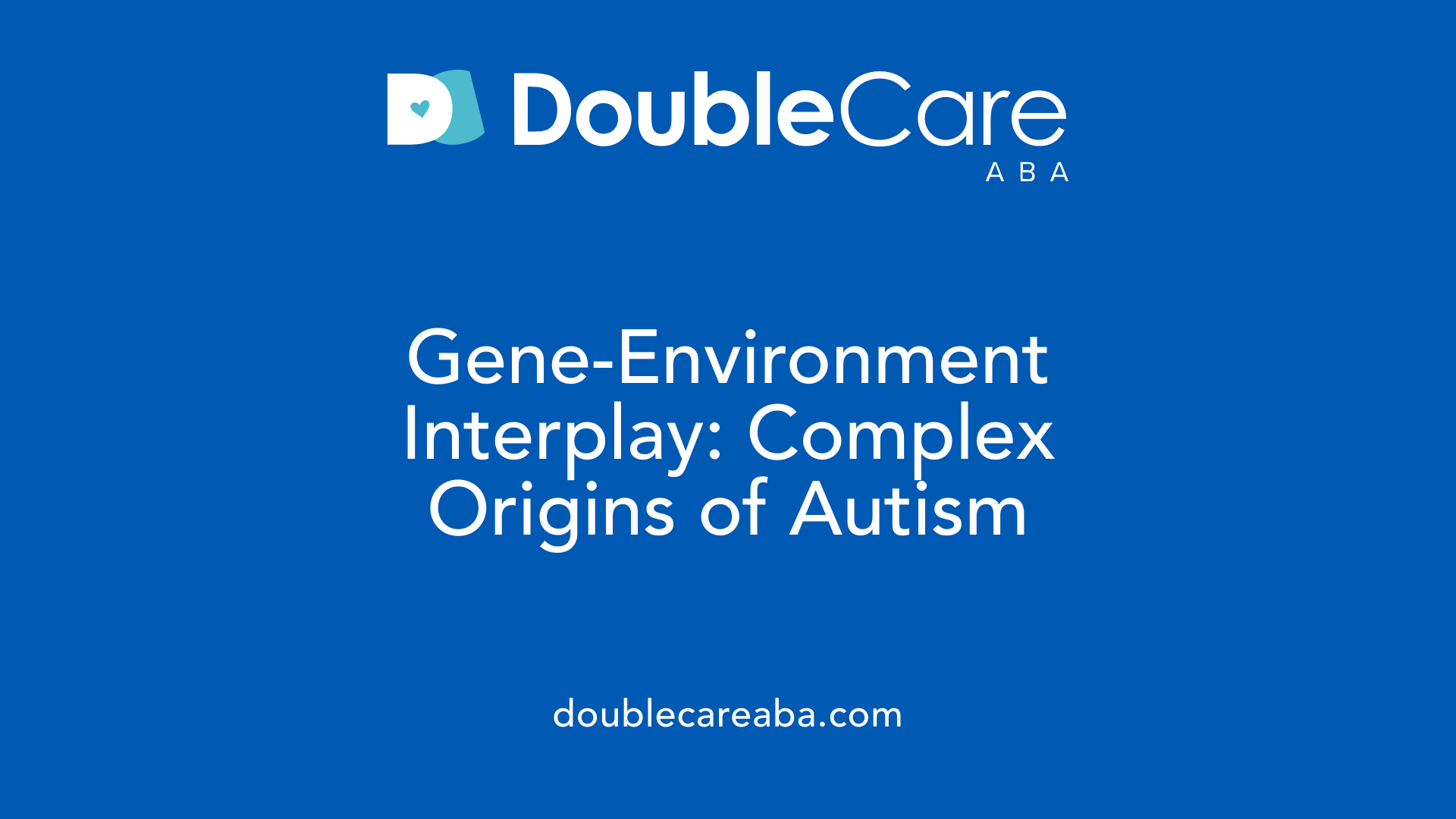
How do gene-environment interactions influence autism?
Autism spectrum disorder (ASD) arises from a complex interplay between genetic vulnerabilities and environmental triggers. While genetic factors contribute significantly to autism risk—accounting for a large portion of liability—the environment can modify how these genetic predispositions express themselves.
Environmental factors such as endocrine-disrupting compounds (EDCs), pollutants, and prenatal exposures play a critical role in this interaction. EDCs, common in plastics and pesticides, can interfere with hormonal signaling pathways important for brain development, potentially altering gene expression in ways that increase ASD risk.
Moreover, pollutants like airborne particulate matter and heavy metals may induce oxidative stress and neuroinflammation, further influencing neuronal signaling and gene regulation. These gene-environment interactions affect vital processes such as synaptic function and communication between neural networks, which are frequently disrupted in ASD.
This dynamic interconnection highlights why autism does not result solely from genetic mutations or environmental insults but often from their combined effects on early brain development. Understanding this relationship is essential for developing prevention strategies and targeted therapies that consider both inherited and external factors affecting autism risk.
Environmental Toxins and Detoxification Challenges in ASD
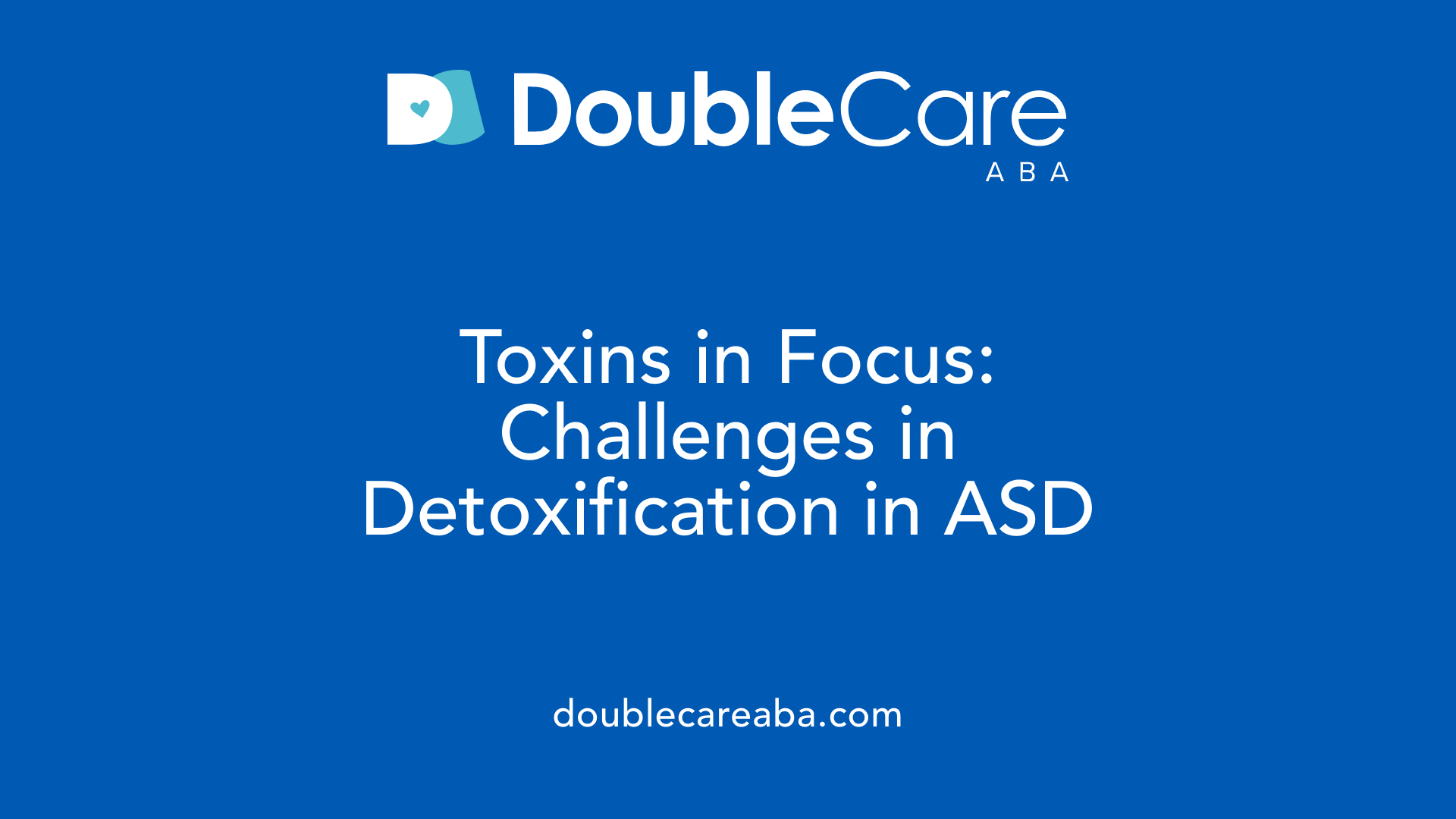
What environmental toxins are children with autism more vulnerable to?
Children with autism spectrum disorder (ASD) show increased vulnerability to certain environmental toxins, notably bisphenol A (BPA), inorganic mercury, and lead. BPA is a widely used industrial chemical found in plastics, which recent research indicates that some children with ASD may have a reduced capacity to detoxify efficiently. This diminished ability to eliminate BPA could contribute to the accumulation of toxic substances in their bodies, potentially impacting neurodevelopment.
Heavy metals such as inorganic mercury and lead are well-documented environmental risk factors related to ASD. These metals can disrupt neurological function through mechanisms like oxidative stress and inflammation, both of which are implicated in ASD pathology. Although definitive causality remains under investigation, the existing evidence calls for thorough research into how these toxins might exacerbate autism risk.
Detoxification impairments in children with ASD
Research suggests that children with autism might experience impairments in the body's detoxification pathways. This can increase their susceptibility to accumulating toxic substances from the environment, including BPA and heavy metals. Such impairments may involve abnormalities in enzyme systems responsible for metabolizing and clearing harmful chemicals, resulting in an altered biochemical environment that affects brain development and function.
Understanding these vulnerabilities highlights the importance of minimizing exposure to environmental toxins and exploring interventions that support detoxification processes. These efforts could reduce the toxic burden and potentially decrease some ASD symptoms or risks related to environmental exposures.
Current Research Limitations and Future Directions
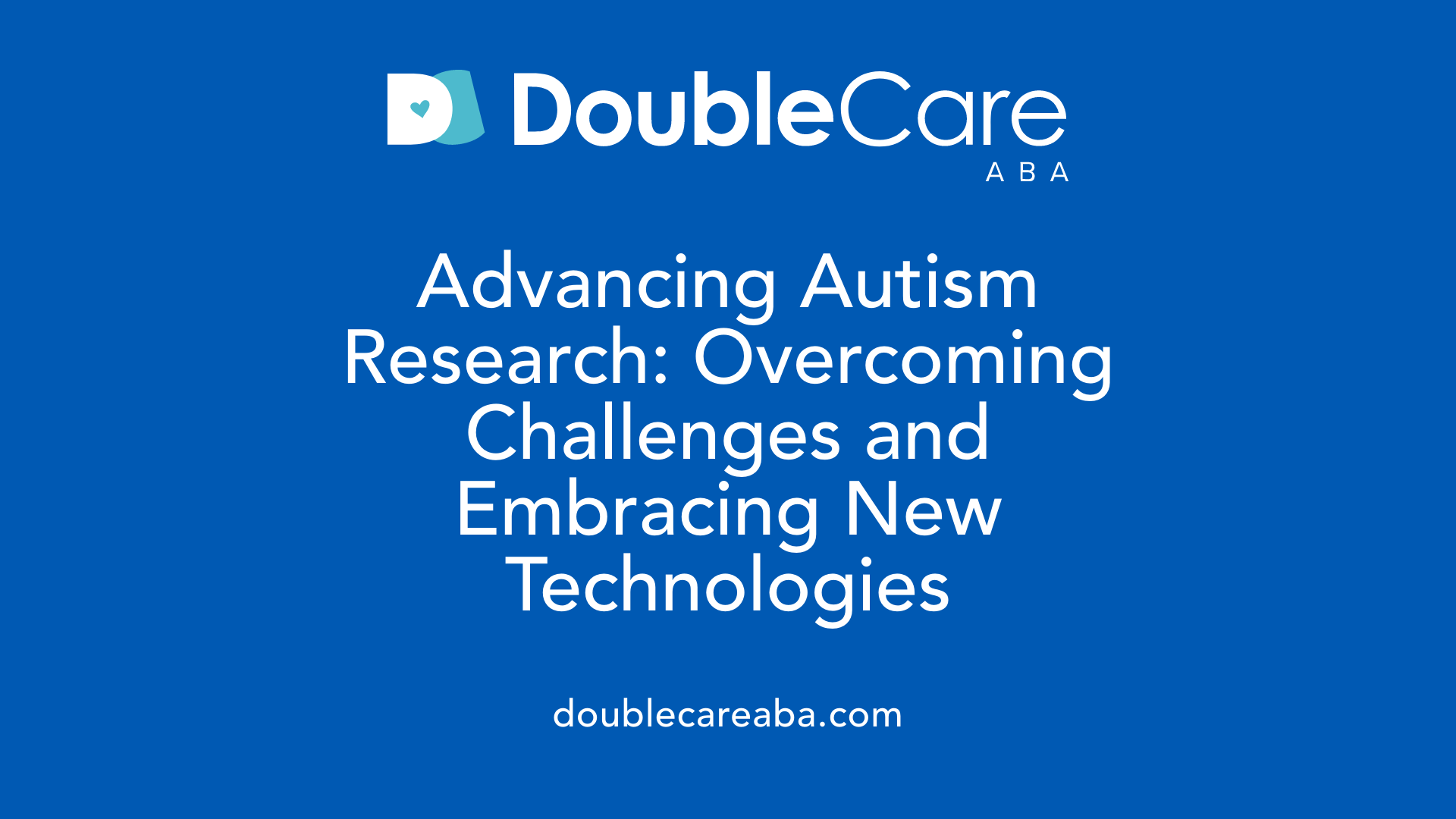
What are the limitations of current research on environmental autism risk factors?
Research investigating environmental factors contributing to autism spectrum disorder (ASD) risk has several notable limitations. Many studies rely on retrospective designs, which may introduce recall bias and make it difficult to accurately assess timing and dosage of environmental exposures. Small sample sizes limit statistical power and the generalizability of findings. Additionally, ASD heterogeneity complicates identifying distinct environmental influences as the disorder encompasses varied symptoms and severities.
Methodological challenges
Researchers face challenges such as indirect or imprecise measurement of environmental exposures and inconsistent definitions of ASD outcomes across studies. Variability in study populations and confounding factors further complicate results. These methodological issues restrict the ability to establish clear causal relationships between prenatal, natal, or postnatal environmental risks and ASD.
Need for prospective cohort studies
Prospective cohort research, which follows participants from pregnancy through early childhood, is vital to overcome recall biases and accurately capture the timing of exposures. Such studies can monitor environmental factors in real-time, allowing analysis of critical developmental windows when the fetal or neonatal brain is most vulnerable.
Genetically informed designs
Given that ASD arises from complex gene-environment interactions, integrating genetic data into environmental studies is essential. Genetically informed designs, including twin or family-based cohorts, help disentangle the relative contributions of hereditary and environmental factors and clarify how gene variants might modify sensitivity to environmental insults.
Precise exposure timing
Environmental exposures vary in their impact depending on when they occur during development. Future research should precisely define exposure windows (e.g., specific trimesters) to link particular environmental insults with neurodevelopmental trajectories leading to ASD. This precision will improve mechanistic understanding and identify actionable prevention strategies.
In summary, advancing ASD environmental risk research requires overcoming current methodological shortcomings by employing larger, longitudinal, genetically informed studies with accurate exposure assessments. These advances promise to clarify how environments interact with genetic susceptibilities, ultimately informing effective interventions.
The Growing Prevalence of Autism and Environmental Contributions
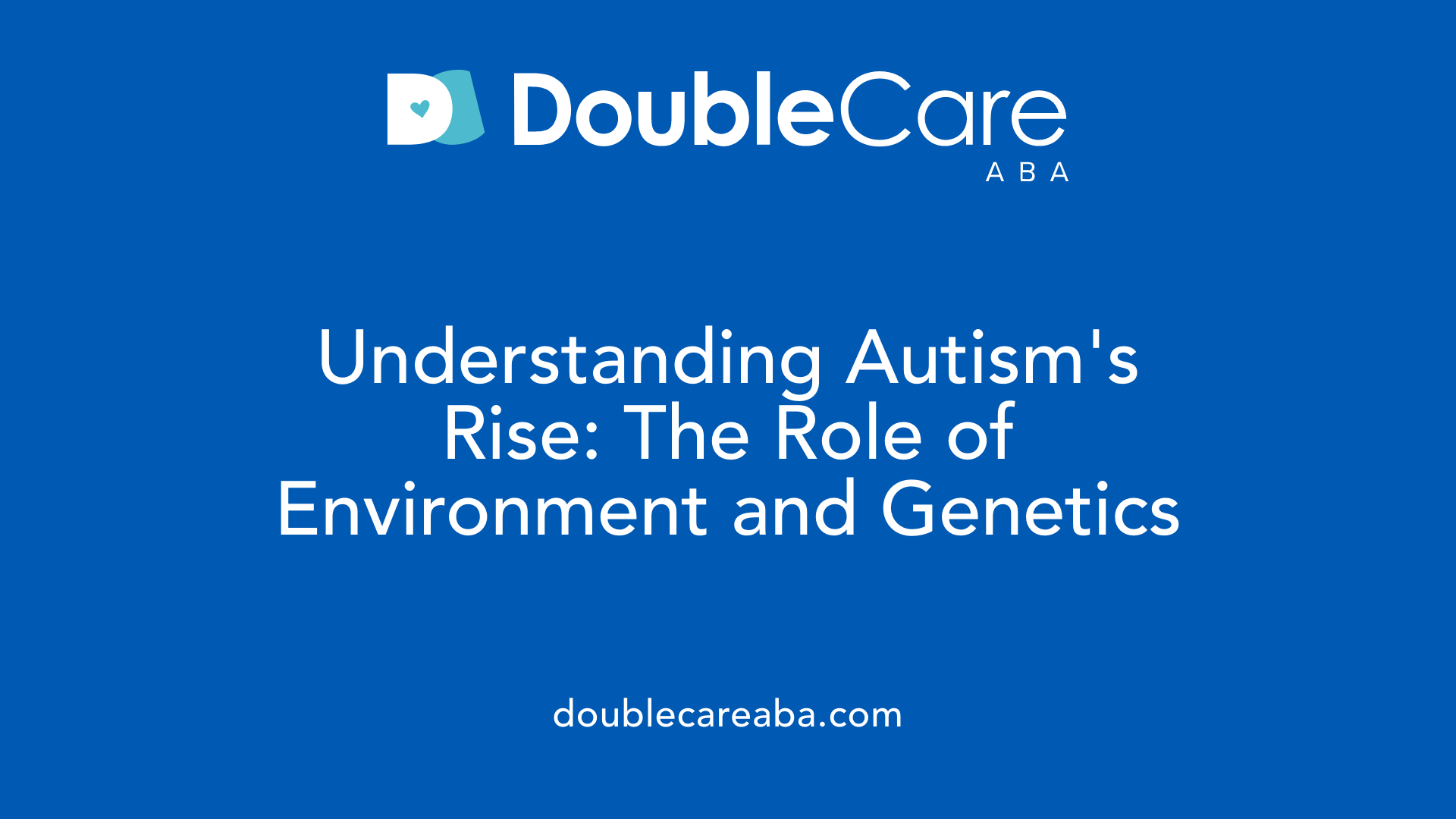
Increased ASD Diagnosis Rates
Over recent decades, autism spectrum disorder (ASD) diagnosis rates have surged, with current estimates showing about 1 in 36 children affected. This rise is partly due to broader diagnostic criteria, improved screening tools, and heightened awareness among clinicians and the public. These factors have made it possible to identify ASD cases that might have previously gone undetected.
Role of Environmental Factors in Rising Prevalence
In addition to diagnostic improvements, growing research points to environmental contributors playing a substantive role in the increased prevalence of autism. Environmental influences such as advanced parental age, maternal metabolic conditions like diabetes and obesity, exposure to air pollution and pesticides during pregnancy, and various prenatal and perinatal complications are linked to a higher ASD risk. For example, advanced paternal or maternal age increases the risk nearly 18-21% per decade, likely driven by genetic mutations and epigenetic changes. Pollution exposure has been associated with neuroinflammation, oxidative stress, and disrupted neuronal development that may enhance ASD susceptibility.
Diagnostic Improvements Versus True Incidence Increases
While better diagnostic methods explain a significant portion of the observed rise in ASD cases, mounting scientific evidence suggests that environmental factors contribute to a genuine increase in incidence. The interplay of genetic predispositions and environmental exposures during critical periods of brain development likely influences this trend. Consequently, the upward trajectory in autism prevalence reflects the combined effects of improved detection and real changes in risk due to environmental shifts.
| Factor | Explanation | Impact on ASD Prevalence |
|---|---|---|
| Diagnostic Criteria & Screening | Expanded definitions and better tools | Identify more cases |
| Advanced Parental Age | Mutations and epigenetic changes in sperm and eggs | Incrementally increases risk |
| Maternal Health Issues | Diabetes, obesity, infections disrupting fetal development | Associated with higher ASD risk |
| Pollution & Chemical Exposure | Induces neuroinflammation and oxidative stress | Linked to increased ASD susceptibility |
| Genetic-Environmental Interactions | Combined impact influencing neurodevelopment | Contributes to true incidence rise |
Overview of Genetic Contributions to Autism
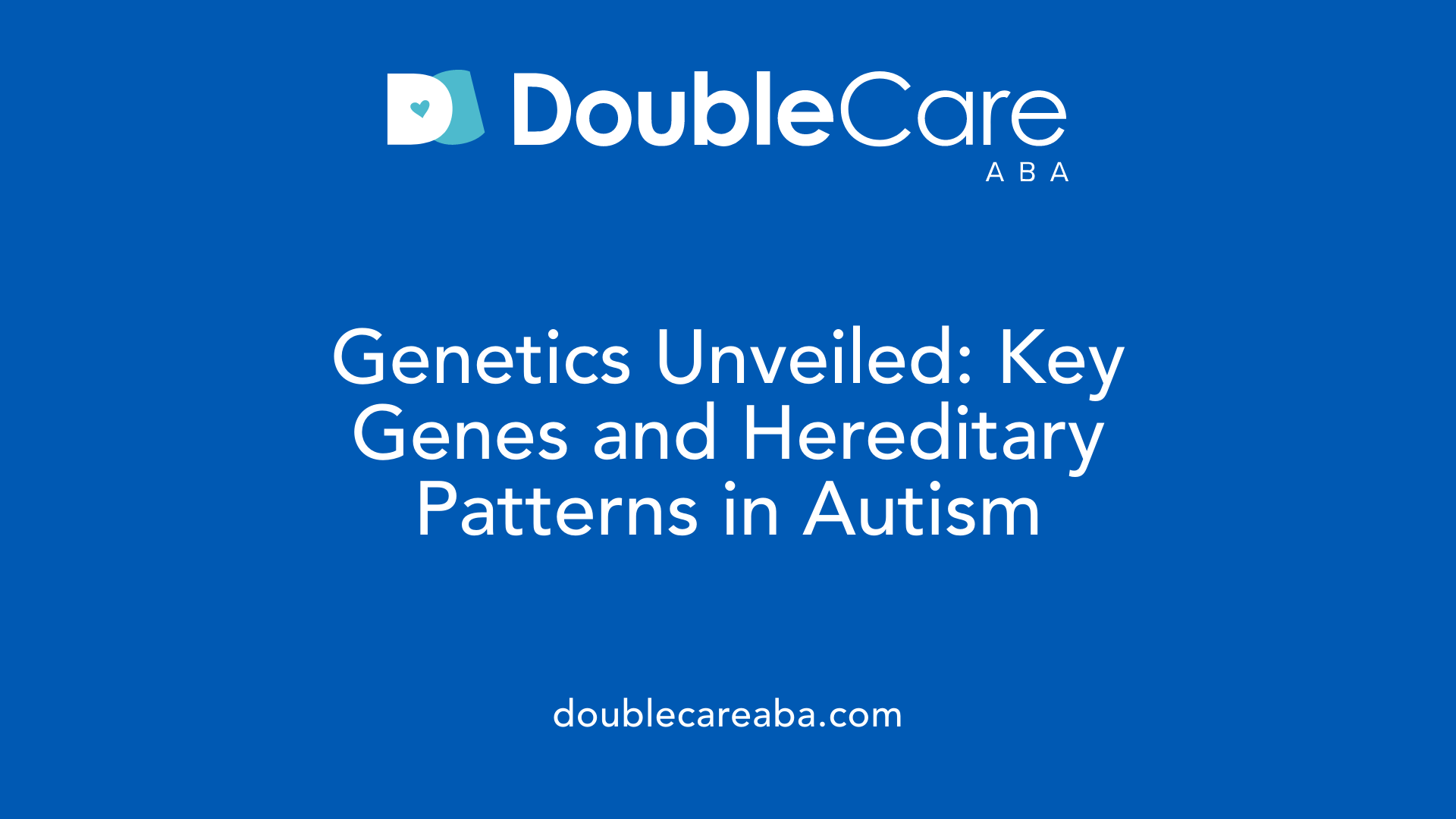
What is the role of genetics in autism development?
Genetic factors play a major role in autism spectrum disorder (ASD), accounting for an estimated 60 to 90% of the risk. Studies show that many genes associated with ASD influence networks of genes that regulate how neurons communicate and how different brain regions connect. This complex genetic architecture explains much of the variability seen in ASD.
Genetic risk and inheritance
Some gene changes or mutations linked to autism can be inherited from parents who do not show autistic traits themselves. This suggests that autism risk involves complex inheritance patterns rather than simple dominant or recessive genes. Multiple gene variants often interact with each other and with environmental factors to influence ASD development.
Gene networks and neuronal communication
Most autism risk genes affect synaptic function, neuronal development, and the regulation of immune responses in the brain. These genes act in interconnected networks that influence brain circuitry and communication between neurons. Disruptions in these networks can lead to the characteristic social, communication, and behavioral symptoms of ASD.
Family studies and heritability
Twin studies provide strong evidence for the heritability of autism, showing that genetic factors explain the majority of ASD risk. These studies reveal that if one identical twin has autism, the likelihood that the other twin is also affected is very high, further supporting a substantial genetic contribution.
| Aspect | Details | Implication |
|---|---|---|
| Genetic Risk | Accounts for 60-90% of autism risk | High heritability |
| Inheritance | Some mutations inherited without parental symptoms | Complex inheritance dynamics |
| Gene Networks | Influence neuronal and brain region communication | Affects brain connectivity |
| Family Studies | Twin studies confirm strong genetic influence | Genetic basis for ASD susceptibility |
Combining Genetic and Environmental Assessments in Autism
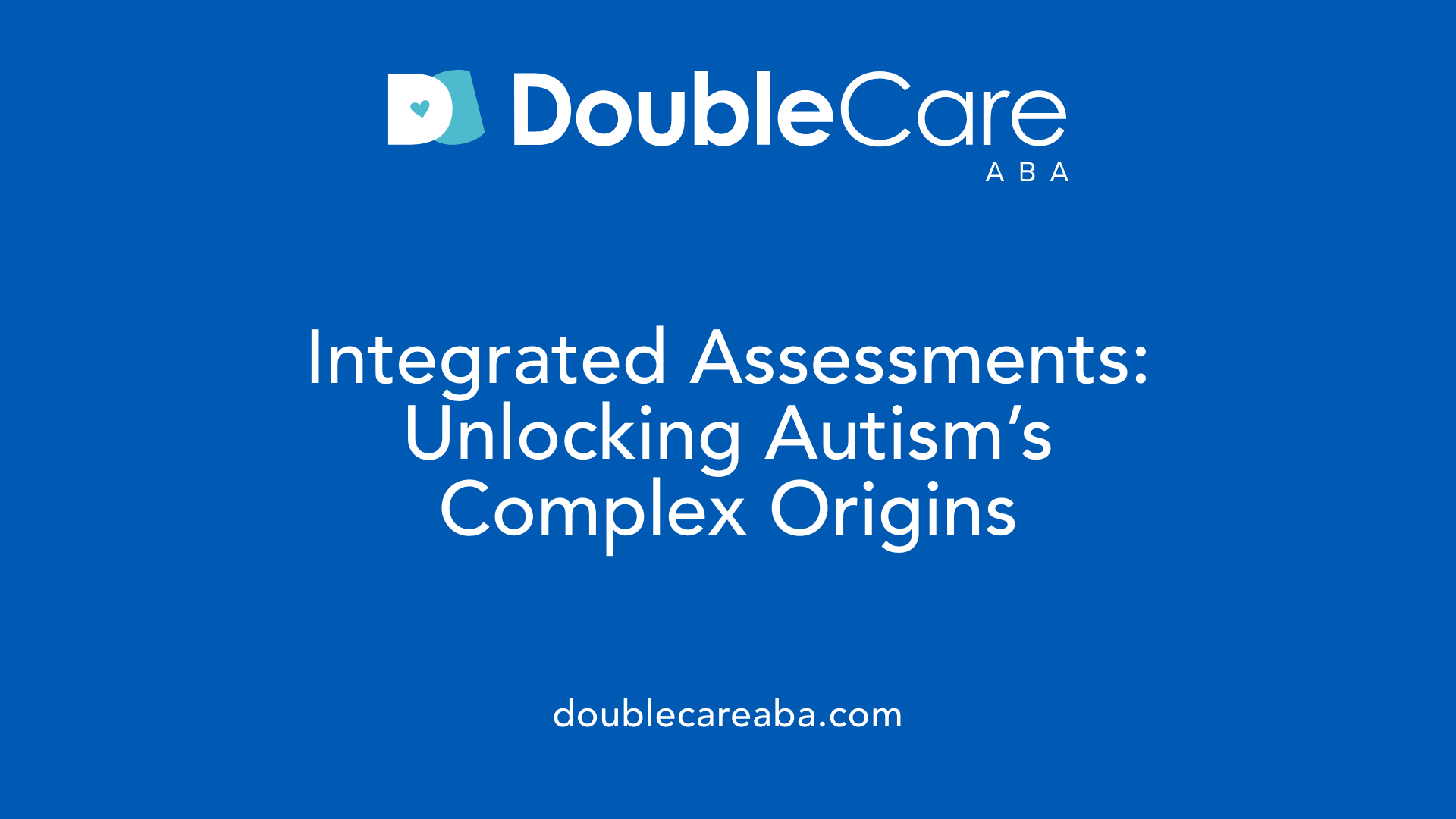
How can combined genetic and environmental assessments improve autism understanding?
Integrated assessments that combine genetic analysis with environmental exposure histories offer a powerful approach to understanding autism spectrum disorder (ASD). By taking a detailed history that includes prenatal, natal, and postnatal factors alongside genetic testing, clinicians and researchers can detect imbalances across immune, gastrointestinal, mitochondrial, hormonal, and neurological systems.
Scientific assessment of imbalances
Laboratory tests and biomarker analyses are central to this holistic evaluation. These may include inflammatory and chemokine markers, metabolic and proteomic profiles, and gut microbiota assessments. Neuroimaging and EEG patterns also provide objective data on neurological function related to ASD. Such comprehensive testing enables precise identification of the biological disruptions associated with an individual's autism presentation.
Holistic approaches
Understanding the interplay between inherited genetic factors and environmental influences enables personalized treatment planning. Evidence-based natural interventions such as vitamin supplementation, dietary modifications, and herbal medicines target system imbalances identified through testing. This scientific, integrative strategy moves beyond symptom management toward addressing root causes shaped by gene-environment interactions.
Together, genetic and environmental assessments support improved early diagnosis, better risk stratification, and individualized therapies, ultimately enhancing outcomes for individuals with autism.
Evidence-Based Holistic and Natural Interventions
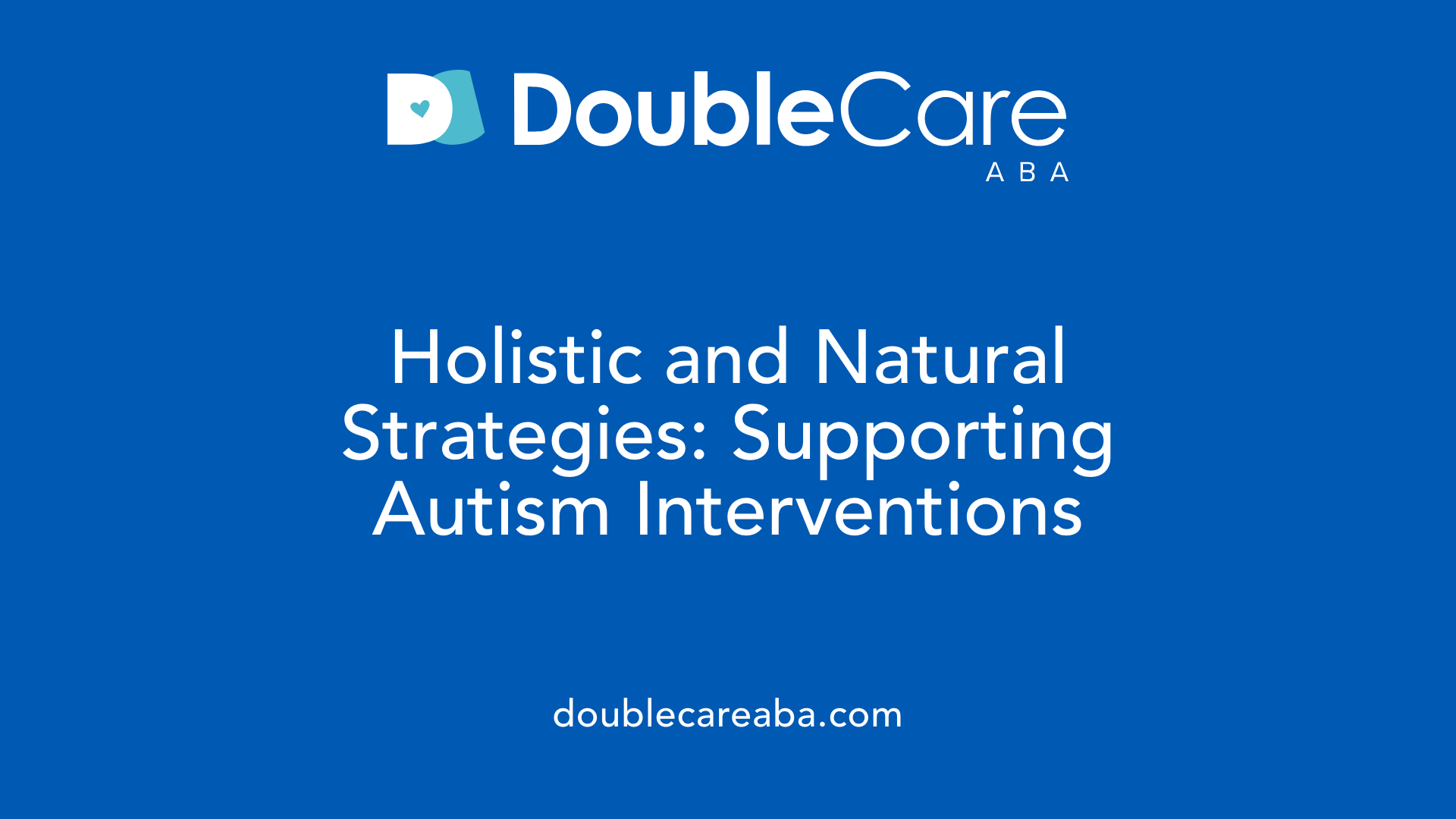
What holistic approaches aid in addressing autism-related imbalances?
Evidence-based holistic approaches play an important role in supporting children with autism spectrum disorder (ASD), particularly by addressing biochemical and environmental imbalances. These methods often complement standard behavioral therapies and medical care.
Vitamins and dietary changes
Supplementation with vitamins such as vitamin D and B-complex has shown promise, as children with ASD often display deficiencies affecting neurological function. Folic acid supplementation pre-pregnancy and during early pregnancy also contributes to reducing risk, though benefits postnatally are less conclusive. Diets rich in essential nutrients including omega-3 fatty acids and iron support healthy brain development and may improve symptoms.
Herbal medicines
Certain herbal medicines with antioxidant and anti-inflammatory properties are explored to target oxidative stress and immune imbalance seen in autism. These natural compounds may help modulate inflammation and support cellular detoxification, although clinical evidence varies and requires further rigorous research.
Reducing environmental toxin exposure
Minimizing exposure to environmental toxins such as heavy metals, pesticides, bisphenol A (BPA), and indoor pollutants is essential. Strategies include choosing organic foods, avoiding plastic containers with BPA, using natural cleaning products, and carefully managing outdoor activities to reduce contact with pollutants.
Creating healthy home environments
A healthy home environment prioritizes good air quality, reduced chemical usage, and protection from excessive noise and sensory stimuli. Establishing routines with balanced nutrition, adequate hydration, and stress reduction techniques also contributes to overall well-being for children with ASD.
Together, these evidence-based holistic methods foster a supportive environment that may enhance neurodevelopmental outcomes and quality of life in children with autism. Holistic interventions are most effective when individualized and integrated with conventional therapies under professional guidance.
Summary of Evidence on Vaccines and Autism
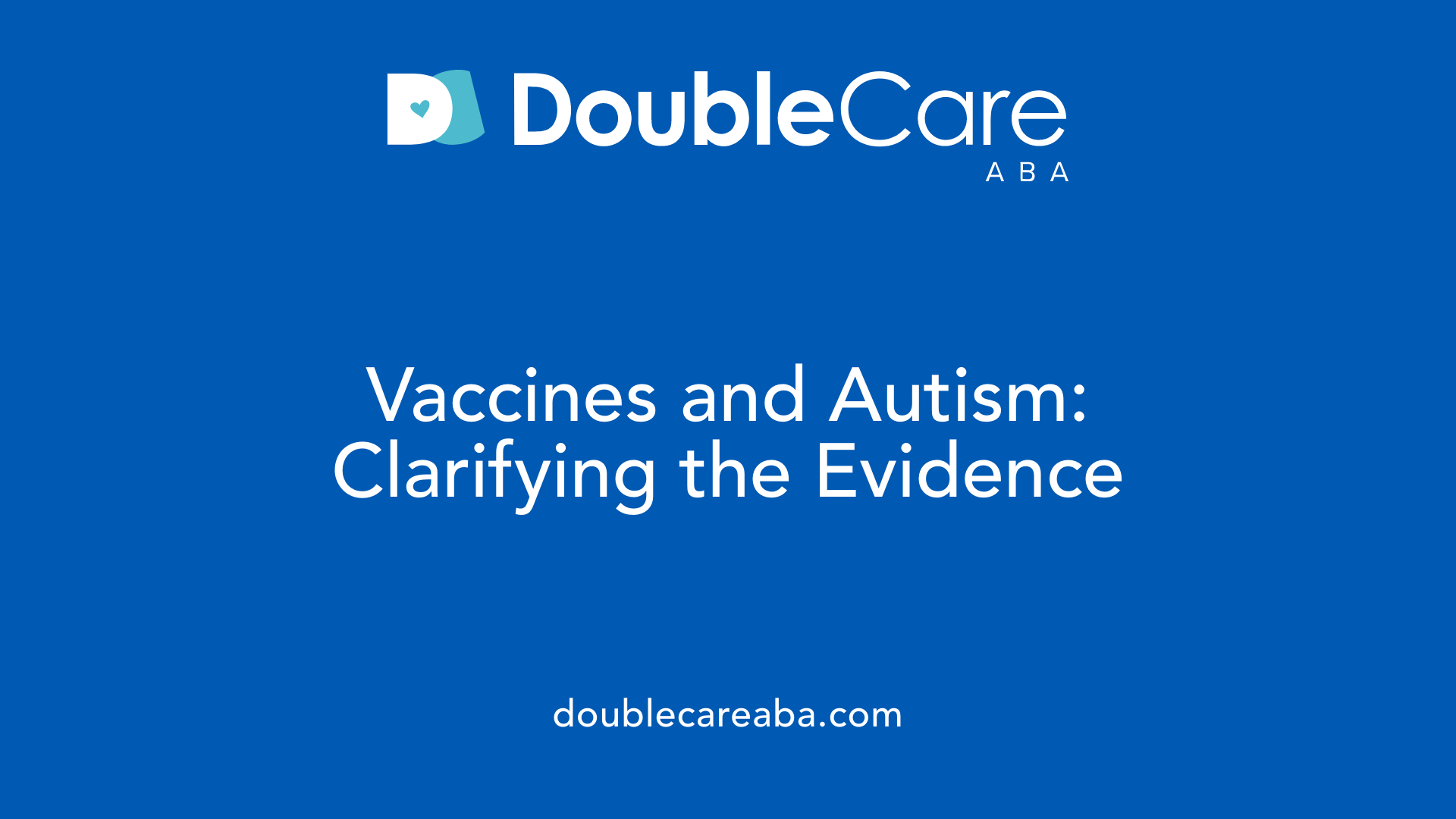
Do vaccines cause autism?
Extensive research spanning decades has been conducted to investigate any potential link between vaccines and autism spectrum disorder (ASD). Studies focusing on vaccines such as the measles, mumps, and rubella (MMR) vaccine, as well as thimerosal-containing vaccines, have consistently found no evidence of a causal relationship with autism. These studies have included large population samples and rigorous methodologies, reinforcing the conclusion that vaccines are not responsible for causing ASD.
Studies disproving vaccine causality
Research includes numerous epidemiological investigations and reviews that have analyzed health records to evaluate autism incidence in vaccinated versus unvaccinated populations. None have demonstrated increased autism risk associated with vaccines. This body of work has been crucial in dispelling misinformation and concerns surrounding vaccine safety.
Scientific consensus on vaccine safety
The global scientific community, including organizations like the Centers for Disease Control and Prevention (CDC), World Health Organization (WHO), and the American Academy of Pediatrics, agrees on the safety and importance of vaccines. They emphasize that vaccines do not cause autism and underscore the critical role immunizations play in preventing serious infectious diseases.
Maintaining confidence in vaccine safety ensures continued public health benefits and protects vulnerable populations from outbreaks. Addressing vaccine hesitancy with evidence-based information is vital for dispelling myths and promoting informed decisions.
Integrating Environmental Insights into Autism Understanding and Care
Autism Spectrum Disorder arises from a multifaceted interplay of genetics and environmental exposures that shape early brain development. Recognizing environmental risk factors—from advanced parental age and maternal health to pollution and prenatal medication—provides critical avenues for prevention, early diagnosis, and tailored intervention. Although challenges remain in disentangling complex gene-environment interactions, ongoing rigorous research and comprehensive assessments promise improved understanding. Holistic approaches that combine behavioral therapies, nutritional support, and environmental toxin reduction underscore the importance of integrating science with practical care strategies. Ultimately, a deeper grasp of environmental influences empowers families, clinicians, and policymakers to better support individuals with autism toward healthier, more fulfilled lives.
References
- Environmental factors influencing the risk of autism - PMC
- Environmental risk factors for autism: an evidence-based ...
- Understanding autism: Causes, diagnosis, and advancing ...
- Environmental Factors - S. Chandra, MD
- What causes autism?
- ABA Therapy Goals: 25 Practical Examples & Timelines
- Applied Behavior Analysis (ABA)
- Applied Behavior Analysis (ABA)
- Applied Behavior Analysis (ABA)
- Introduction to Applied Behavior Analysis: ABA 101













